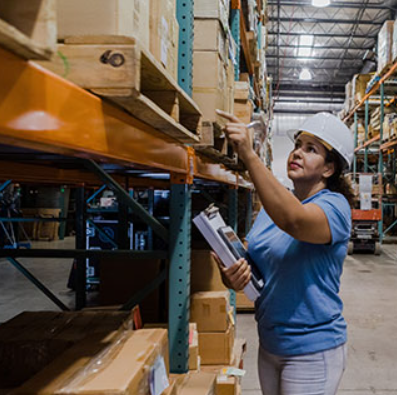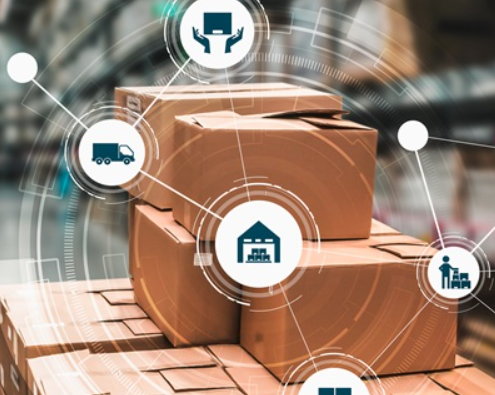
As supply chains grow increasingly complex, managing them effectively requires innovative tools and technologies. One of the most impactful of these is the Internet of Things (IoT), which has begun transforming supply chain operations in significant ways. By 2033, the global market for IoT in supply chain management is expected to surpass $41 billion, underscoring its growing importance in modern business practices.
What Is IoT in Supply Chain Management?
When we discuss IoT in the context of supply chains, we’re referring to the integration of various connected devices and sensors that collect and exchange data in real-time. This technology goes beyond just automating tasks—it helps generate insights that can transform how supply chains operate.
The power of IoT lies in its ability to connect discrete data points and turn them into actionable information. Rather than simply gathering raw data, IoT systems create a comprehensive, real-time picture of your entire operation, allowing you to make decisions based on a dynamic flow of information.
For example, by linking inventory levels to fleet movements or understanding how cold chain performance impacts delivery schedules, IoT enables you to foresee potential issues and make proactive decisions.
How Is IoT Being Used in Supply Chains?
IoT has become an integral part of many aspects of modern supply chains, particularly in areas like warehouse management, fleet tracking, and predictive maintenance. Let’s dive into some key examples of how IoT is being implemented:
Real-Time Asset Tracking and Visibility
Gone are the days of losing track of critical shipments. IoT sensors allow you to track every item’s location and condition as it moves through the supply chain. Whether goods are in a warehouse or en route to a customer, IoT gives you complete visibility.
Smart Warehouse Management
IoT technology turns warehouses into intelligent ecosystems. Smart racking systems track inventory in real-time, while automated vehicles and robots optimize their routes within the warehouse. As a result, efficiency improves, reducing manual labor and increasing throughput by 25-30%.
Predictive Maintenance
By using IoT sensors to monitor equipment, businesses can predict and prevent breakdowns. These sensors detect minor changes in vibrations or temperature, alerting teams before a critical failure occurs, which reduces costly emergency repairs and downtime.
Cold Chain Monitoring
For businesses dealing with temperature-sensitive products, IoT sensors ensure that goods are transported under the right conditions. These sensors track temperature, humidity, and other factors, alerting stakeholders if conditions fall outside the desired range.
Inventory Optimization
IoT helps businesses move away from “just-in-case” inventory systems. Real-time data allows businesses to keep stock levels at optimal amounts, triggering reorders automatically when inventory falls below certain thresholds.
Fleet Management and Route Optimization
IoT-enabled fleet management allows businesses to monitor vehicle performance, fuel consumption, and driver behavior. Real-time data helps companies adjust routes on the fly, optimizing fuel efficiency and ensuring timely deliveries.
Quality Control and Compliance
IoT has a major role in ensuring quality and regulatory compliance. By continuously monitoring product conditions during transit, businesses can maintain an unbroken record of quality, which is crucial for industries with stringent regulations.
Energy and Resource Management
Smart sensors help businesses manage energy use across facilities, optimizing lighting, heating, and other resources. This not only reduces operational costs but also contributes to sustainability efforts by minimizing energy waste.
IoT’s Impact on Warehouse Operations
Many warehouses are already benefiting from IoT technology. Here’s how different systems within a warehouse can be upgraded:
- Warehouse Equipment: Forklifts, conveyor belts, and automated guided vehicles (AGVs) are all enhanced with IoT. These machines can communicate their location, maintenance needs, and operational status, optimizing workflow.
- Storage Systems: Smart shelving units can monitor inventory in real-time, while RFID readers and load sensors track product movement and ensure stock levels remain accurate.
- Transportation Fleet: Delivery vehicles equipped with IoT can provide real-time data on fuel efficiency, engine diagnostics, and driver behavior, all of which help optimize the entire logistics process.
- Packaging and Containers: Smart containers can monitor not only location but also environmental factors like temperature or exposure to shock, ensuring products remain in optimal condition during transport.
- Loading Dock Equipment: IoT-enabled loading dock systems can track the usage of doors and levelers, ensuring maintenance is performed when needed and reducing energy waste from open doors.
- Environmental Controls: IoT can enhance control over warehouse environments, adjusting HVAC systems based on real-time conditions to ensure the best storage conditions.
- Security Systems: Access control and surveillance systems can integrate with IoT, providing a comprehensive view of who is in the facility and what they’re doing, increasing both security and operational transparency.
Challenges of IoT in Supply Chains
While IoT offers transformative benefits, implementing it in your supply chain is not without challenges:
- Security Concerns: As more devices connect to the internet, the risk of cyber threats increases. A secure IoT infrastructure is critical to protect data and systems.
- Data Overload: The vast amounts of data generated by IoT devices can overwhelm businesses if not managed properly. Companies must have the tools and strategies to process and analyze this data effectively.
- Integration Difficulties: Integrating IoT technology with legacy systems can be complex and costly. Ensuring compatibility across various platforms and technologies requires careful planning.
- Adoption Resistance: Even the best technology can fail if the team is not properly trained or is resistant to change. Successful IoT adoption requires effective change management strategies.
Conclusion
The Internet of Things is revolutionizing how supply chains operate. With connected devices and real-time data, businesses can optimize inventory management, improve operational efficiency, and respond faster to disruptions. As IoT technologies continue to evolve, their role in supply chains will only grow more integral, offering companies a way to stay competitive and meet customer demands with greater precision. However, for businesses to fully reap these benefits, they must overcome the challenges of integration, data management, and workforce adaptation. When done right, IoT can transform supply chains into efficient, agile, and forward-thinking operations.












